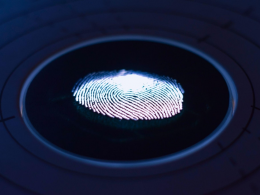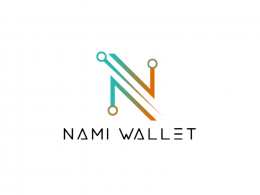There are major technological challenges facing the crypto industry as it travels the road to widespread adoption. One of them is interoperability.
Due to the lack of direct interoperability, users cannot use their funds within one DeFi ecosystem, and then exchange them with another. This creates a barrier to the adoption of decentralized finance, and cryptocurrencies.
The fact that chains operate in isolation makes it impossible for users to meet all their demands. Therefore, developers have understood that silos are not beneficial, since by being able to interact with other blockchains, their own developments will be more widely accepted.
Likewise, interoperability has a practical impact in the area of decentralization, since it distributes users among different platforms, atomizing market demand in the variety of offers. In other words, it discourages centralization.
In this way, decentralization is further enhanced, as information flows between different ecosystems, even though each retains its own consensus.
The expectation is that blockchain interoperability will have, among developers, the status of importance it deserves.
In a business ecosystem, companies will no longer have to deal with the blockchains on which the business is based. Instead, companies will be able to transact with customers on other compatible blockchains.
Blockchain interoperability should also lead to the creation of multi-token wallets, allowing users to rely on a single storage and transaction platform, to use with ease across multiple blockchains.
The biggest challenge to interoperability between blockchains is the programming language on which they are developed. The transaction schema as well as the consensus models differ for interconnection, and in some, a lot.
To overcome some of the underlying problems that hinder blockchain interoperability, there is a need to turn to a technology that enables universal communication between multiple blockchains. The use of open protocols, as well as multi-chain frameworks, are presented as possible solutions to blockchain interoperability problems.
The use of open protocols should do much to enable standardized pathways, through which various blockchains can communicate with each other with ease. Such protocols provide the universal language for blockchains that enhance communication.
Multi-chain frameworks, on the other hand, act as open environments through which blockchains are connected. Unlike Open Protocols, they are more complicated. However, they help facilitate open communication, and the transfer of both value and data between different blockchains.
With multi-chain frameworks, blockchains can connect and become part of a standardized ecosystem in order to share information. It is for this reason that they are most often referred to as the Internet of blockchains, as they offer unique and promising capabilities when it comes to blockchain interoperability.
But the most widespread technology among developers is cross-chain.
What is Cross-Chain Technology?
Cross-chain technology seeks the transmission of securities, information, or tokens between different networks, with unmediated communication.
A cross-chain bridge is a connection between two blockchains, for practical linkage without sharing the ledger.
Most bridges operate on a burn-and-issue protocol, meaning that when a token is transferred from one blockchain to another, the underlying protocol first burns the token and then mints an equivalent token, on the other blockchain. This ensures that, throughout the blockchain ecosystem, monetary policies are respected so that there are no duplicate values.
The Proposal
Currently, there is no standard for token transfer interoperability bridges between Cardano and other Layer 1 blockchains or sidechains.
The idea is to create a metadata standard that allows developers to unify their interoperability bridge interfaces, whether a bridge is being built between Cardano and Ethereum, or between Cardano and a sidechain.
Currently there is no standard, and each individual bridge project must create its own from scratch.
Therefore, dcSpark will work to create a generalized standard that allows developers to add additional information about the specific chain to which assets are intended to be sent. It will also provide other enhancements such as a refund address in case bridges run into problems.
This proposal is directly related to Milkomeda, the sidechain that the dcSpark team is designing, with alternative Virtual Machines connected to Layer 1 mainchains, which use their cryptocurrency as the base asset. In Cardano, wADA (wrapped ADA) will be used as the asset to pay transaction fees. It will be a protocol that employs the concept of wrapped smart contracts.
Future deployments of Milkomeda will open the door to interoperability between Cardano, Solana and other L1 blockchains. In this way, Milkomeda will seek interoperability with multiple blockchains.
This standard will be used in the Milkomeda protocol, and will be open for other bridges to use for their own bridge implementations to interoperate faster.
Funding requested: USD 25,000
The Team
The company was founded by Sebastien Guillemot, Nicolas Arqueros and Robert Kornacki.
Sebastien Guillemot
After working at Microsoft, he joined EMURGO (Cardano’s Consensys) as VP of Engineering and Product Manager at Cardano, where his team built products that reached 6-digit active user numbers, and led the development of SDKs used by large companies such as Coinbase.
Nicolas Arqueros
He has experience in both founding and mentoring many successful startups during his career. He was previously the CTO of EMURGO (Cardano’s Consensys) and is currently a member of the Board of Directors of the Cardano Foundation and Senior Investment Advisor at SOSV.
Robert Kornacki
Started as a fellow at dLab (blockchain accelerator program) and later joined Ergo Foundation as a board member, as well as EMURGO (Cardano’s Consensys) as Head of Research, where he developed design patterns and smart contracts that manage millions of assets.
They recently joined Nicolas Di Prima, as Chief Engineer and Cryptographic Engineering specialist, who worked on the ancestor of Yoroi: Icarus Wallet and the successful work on the delivery of the first implementation of Ouroboros Praos: Jörmungandr, the node that powered the ITN. Most recently he led the entire development of Cardano’s Catalyst voting platform.
You can see the original proposal in the FUND6 at Catalyst
If you want to understand more about the importance of interoperability, I wrote a previous article about The Future of Blockchain Will Be Interoperability.










